【Homemade Fireworks】Let’s Make a Snake Firework! A Living Thing?
I’m Ken Kuwako, a science trainer. Every day is an experiment.
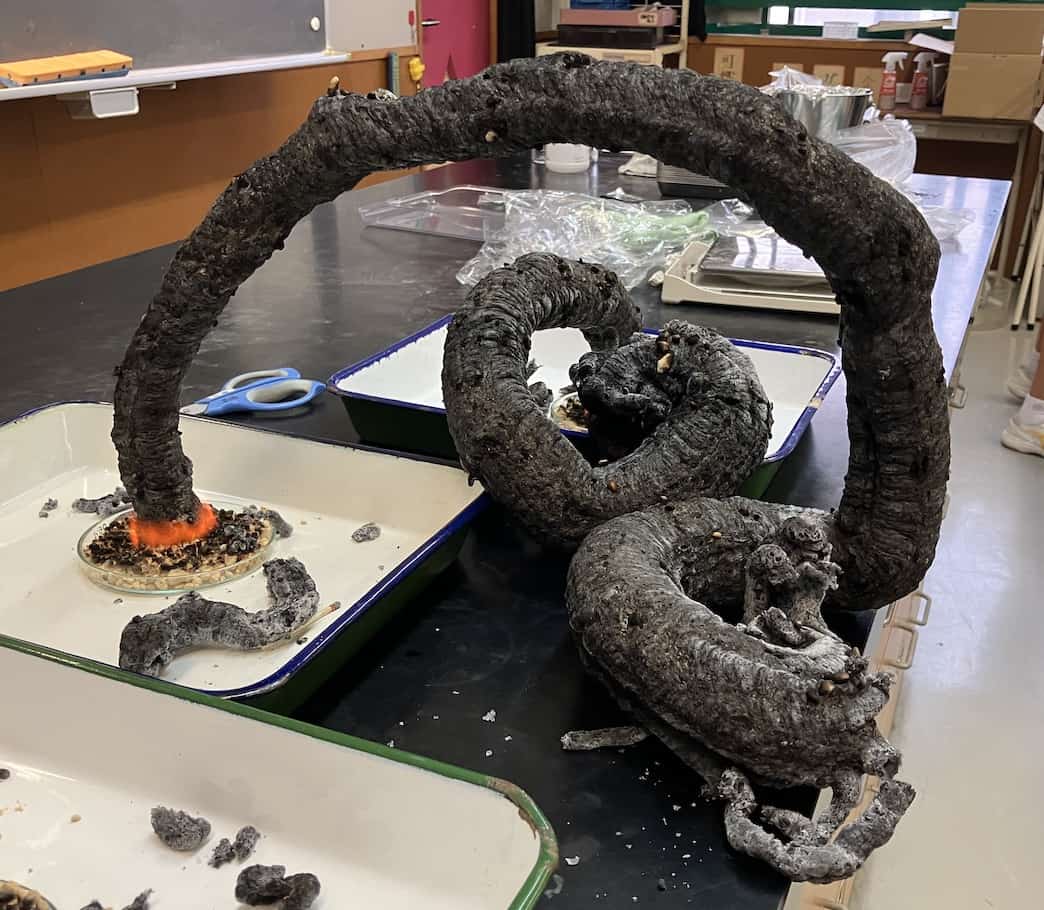
When you think of summer, you think of fireworks. While beautiful fireworks lighting up the night sky are great, this time we’d like to introduce a unique type of firework that seems to wriggle and grow as if it were alive. It’s called a “snake firework.” We wanted to make an experiment that you might find in a science textbook feel more accessible and fun as a summer vacation science project or a weekend activity with the family. With that in mind, we challenged ourselves to create an original snake firework with our science club students.
Unlike commercially available snake fireworks, the greatest appeal of this homemade version is that you can experience the fun of a chemical reaction using everyday materials. Through repeated trial and error, the students came up with their own special mixture and created an amazing “giant snake.” Its appearance is like magic! What’s more, the materials you need are things you can find at home or at the pharmacy. No difficult knowledge is required. Now, why don’t you join us and take a peek into the scientific world of this mysterious snake firework?
What You’ll Need
Sugar (sucrose) 20g
Baking soda (sodium bicarbonate) 5g
Ethanol 25ml
Sand (We used “Kanuma soil” for this experiment)
Heat-resistant container (A baking tray or anything heat-resistant is fine)
There are a few types of ethanol. They are classified in order of alcohol concentration: absolute ethanol (99.5 vol%), ethanol (95.1-96.9%), and rubbing alcohol (76.9-81.4%). For this experiment, any type is fine as long as it ignites.
Procedure
① Put 25g of sugar and 5g of baking soda into 25g of ethanol.
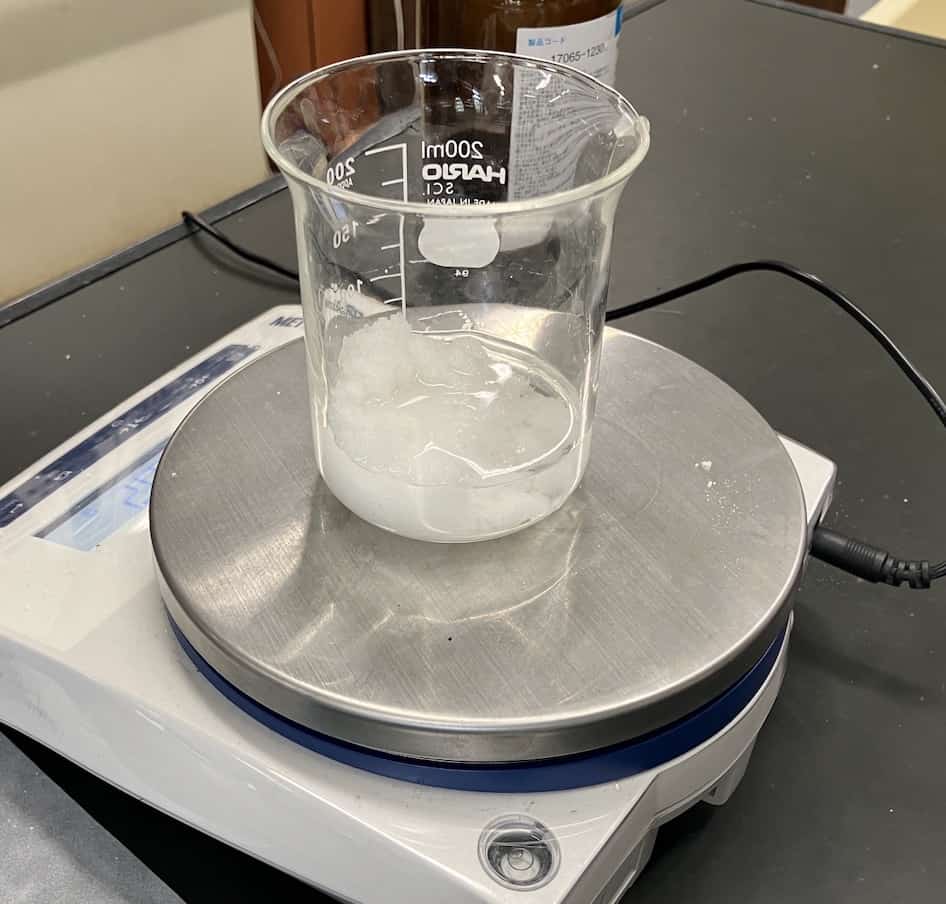
② Mix the solution and pour it into a petri dish on the heat-resistant container that contains the sand.

③ Light it with a lighter.
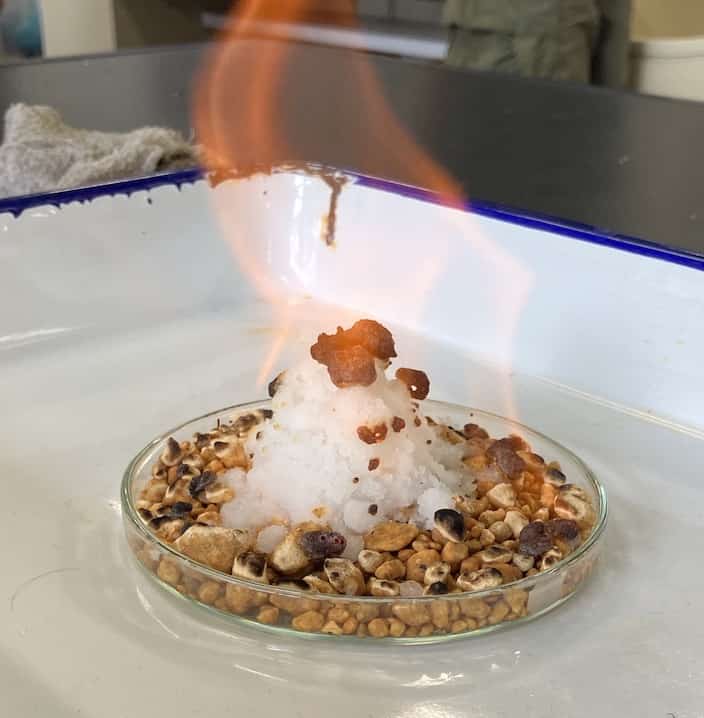 Here’s what it looked like when we lit it.
Here’s what it looked like when we lit it.
After experimenting with various mixtures, we found that pre-mixing the ingredients worked better. Here are some photos of our most successful attempts.
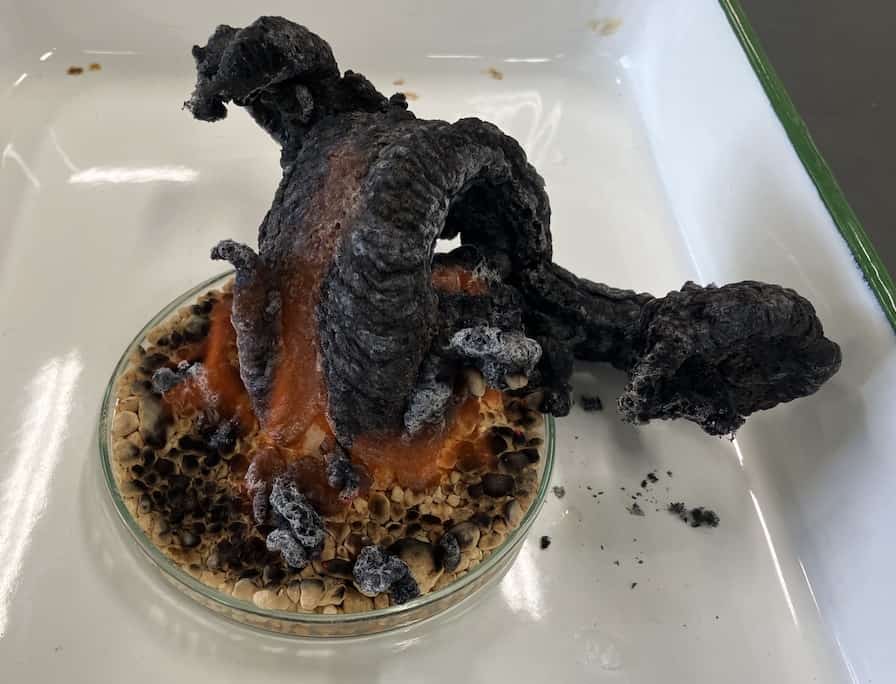
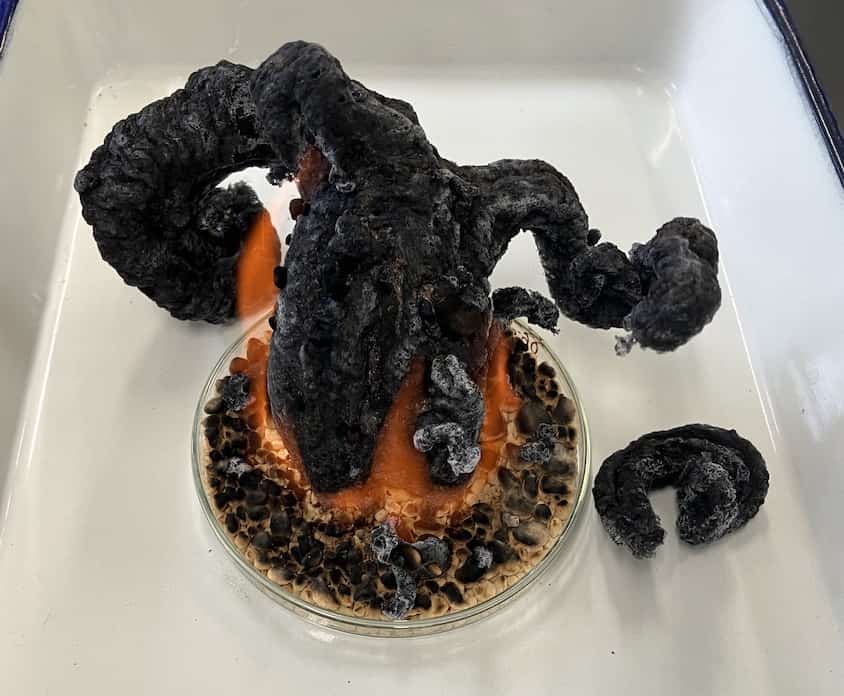
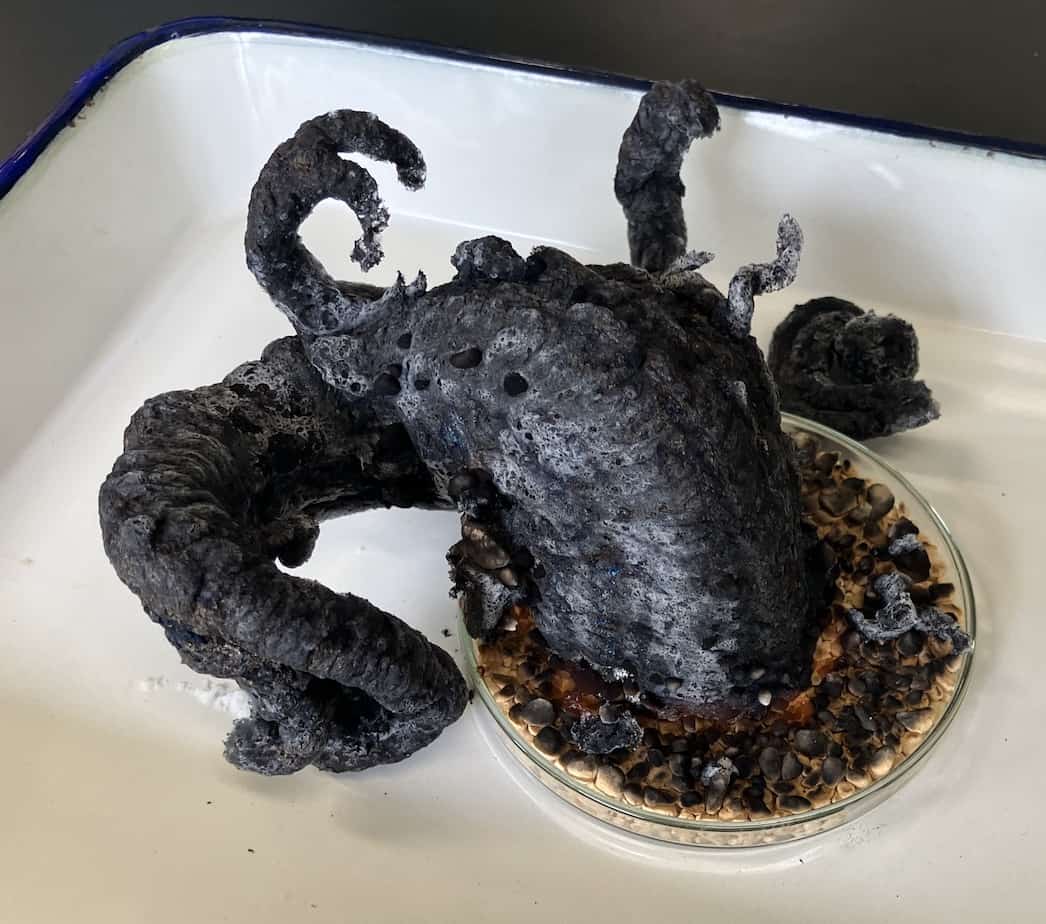
It’s truly impressive to watch the fireworks wriggle and grow as if they were alive. Some of our other creations even look like works of art.
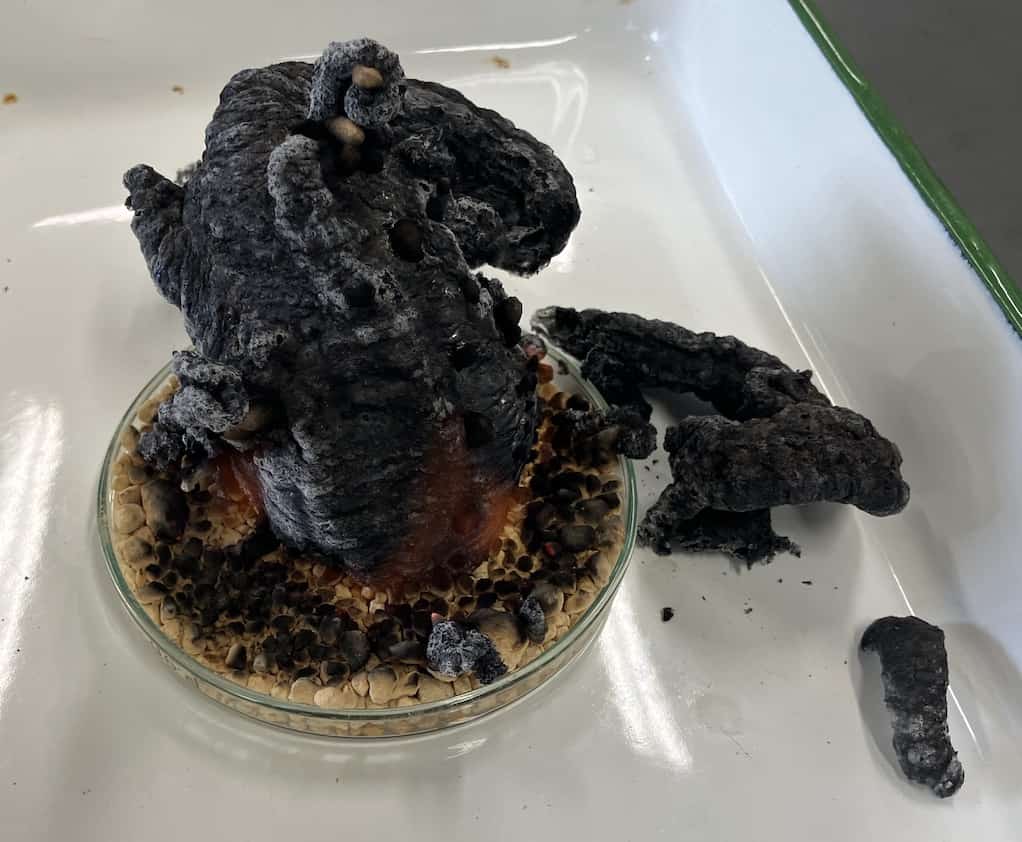

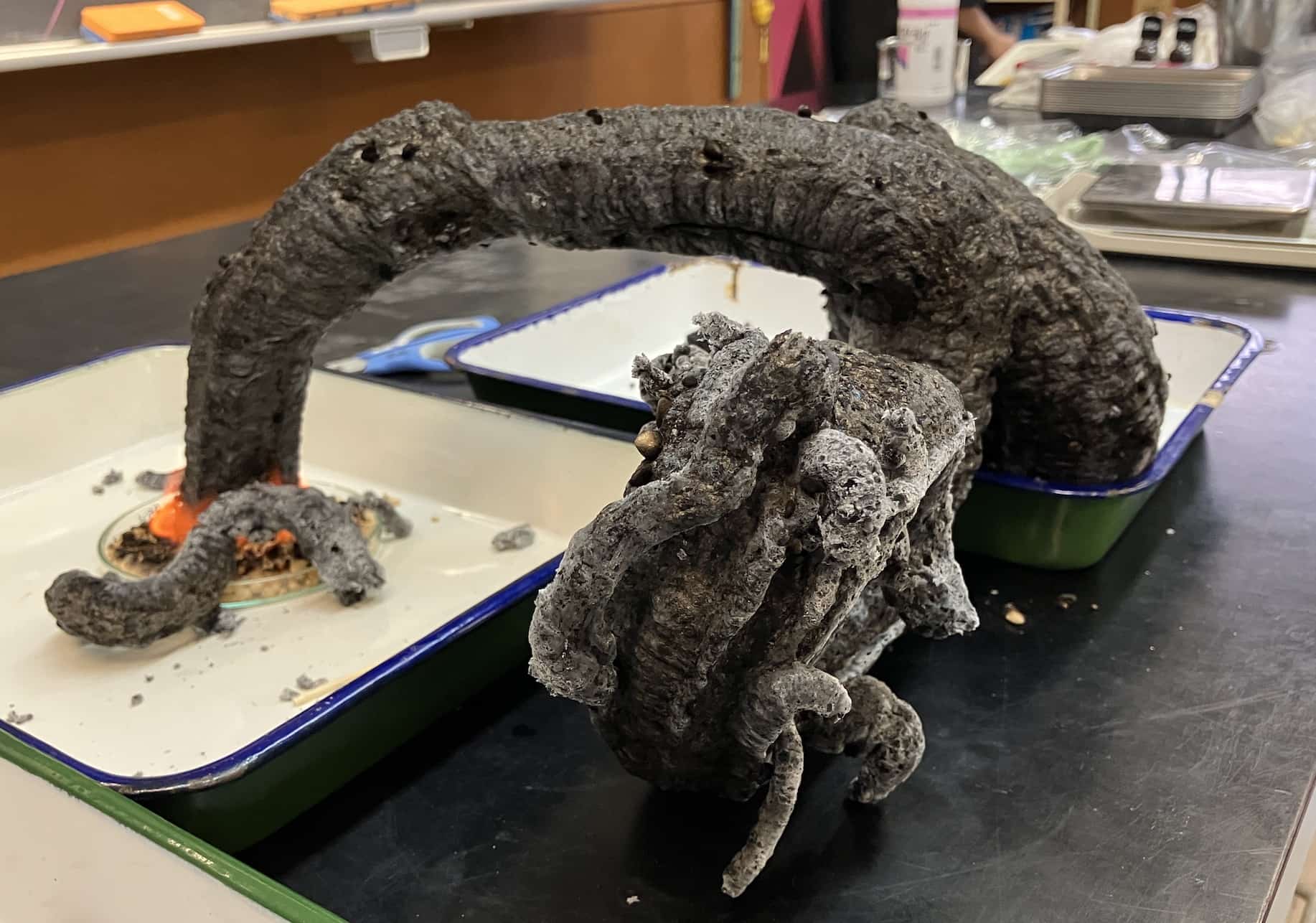
The Scientific Mechanism of Snake Fireworks
When the experiment is over, the black snake (be sure to let it cool down before touching it!) feels brittle and light, so much so that you can blow it away with a puff of air. A simple chemical reaction is behind this fascinating phenomenon.
Combustion and Carbonization of Sugar
When you light the mixture, the ethanol first burns, and the heat causes the sugar to melt. The melted sugar then decomposes due to the heat, releasing water molecules and undergoing carbonization. This is the true identity of the black part of the snake.
Thermal Decomposition of Baking Soda
At the same time, the baking soda (sodium bicarbonate) also decomposes due to the heat. During this process, carbon dioxide gas is produced.
2NaHCO₃ → Na₂CO₃ + H₂O + CO₂
How the Snake Grows
The melted, viscous sugar is expanded by the bubbles of carbon dioxide gas produced by the baking soda. As the carbon dioxide bubbles push out the sugar carbide (carbon) like a balloon, the snake grows into a long, wriggly shape. The principle is similar to “karumeyaki” (a type of Japanese puffed sugar candy)!
Why not challenge yourself to experience the wonders of science with this snake firework, maybe along with some homemade sparklers, this summer?
I also thought it would be a good idea to try it with homemade sparklers this summer.
Contact & Requests
Make the wonders and fun of science more accessible! We’ve compiled fun science experiments you can do at home and easy-to-understand tips. Feel free to search around!
・About the administrator, Ken Kuwako: here
・For various requests (writing, lectures, science workshops, TV supervision, appearances, etc.): here
・Article updates are delivered on X!
![]() The Science Fun Channel is currently distributing experiment videos!
The Science Fun Channel is currently distributing experiment videos!


